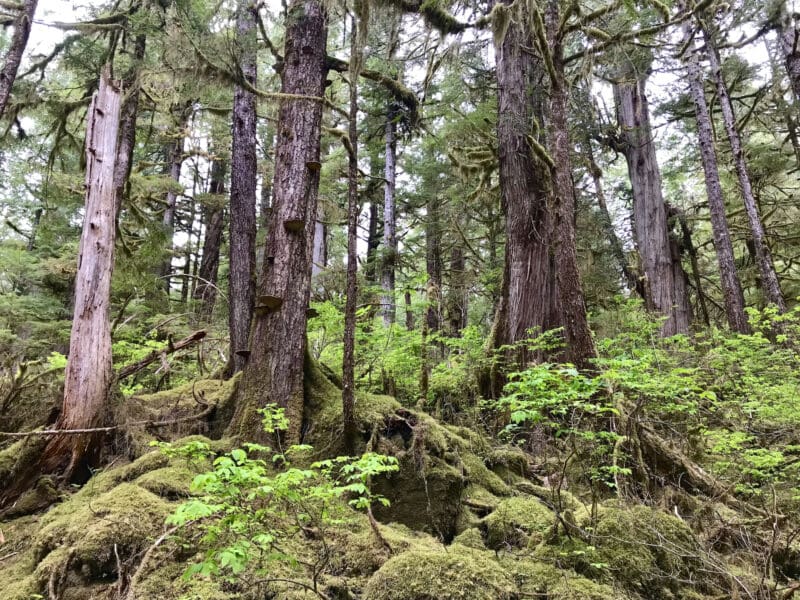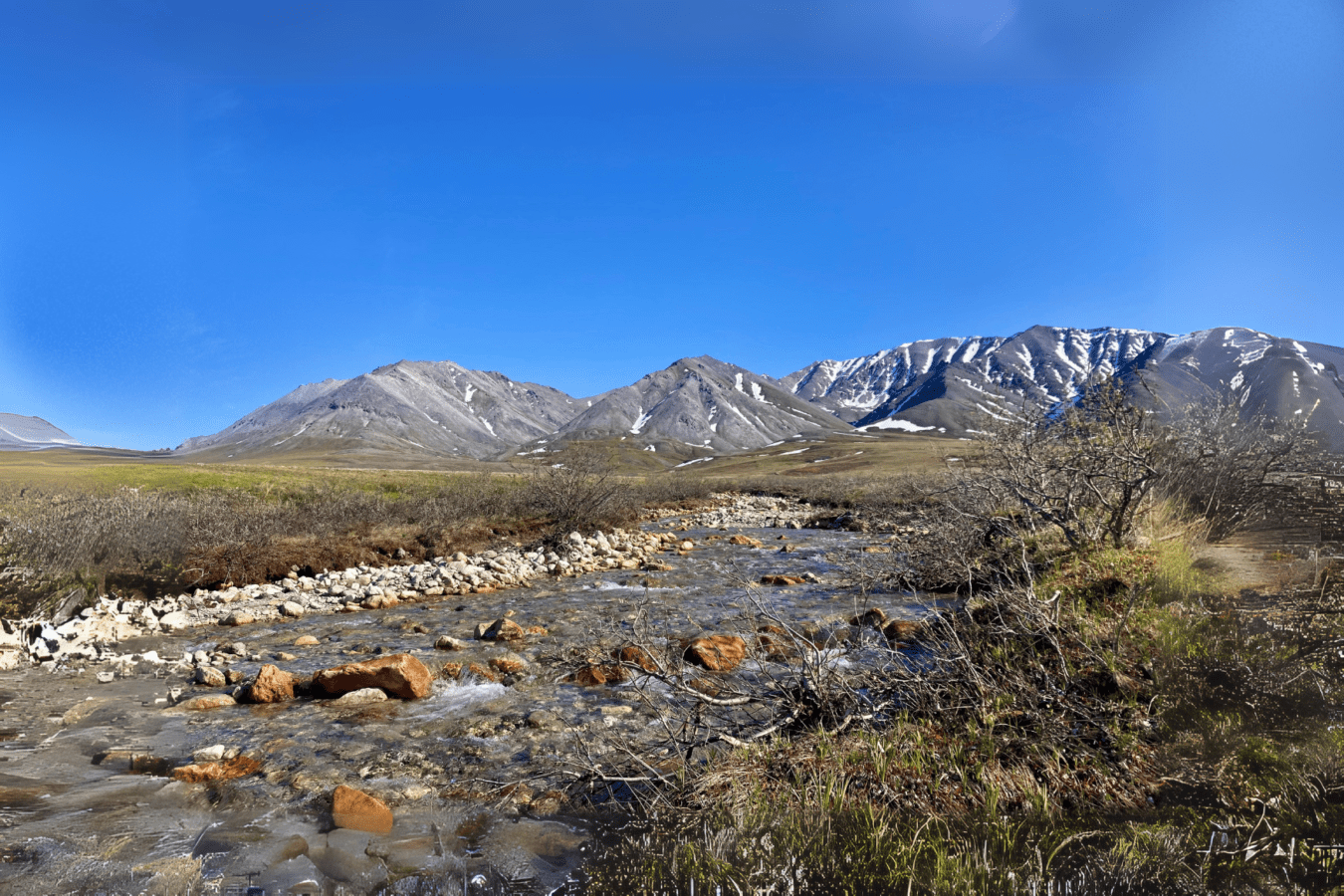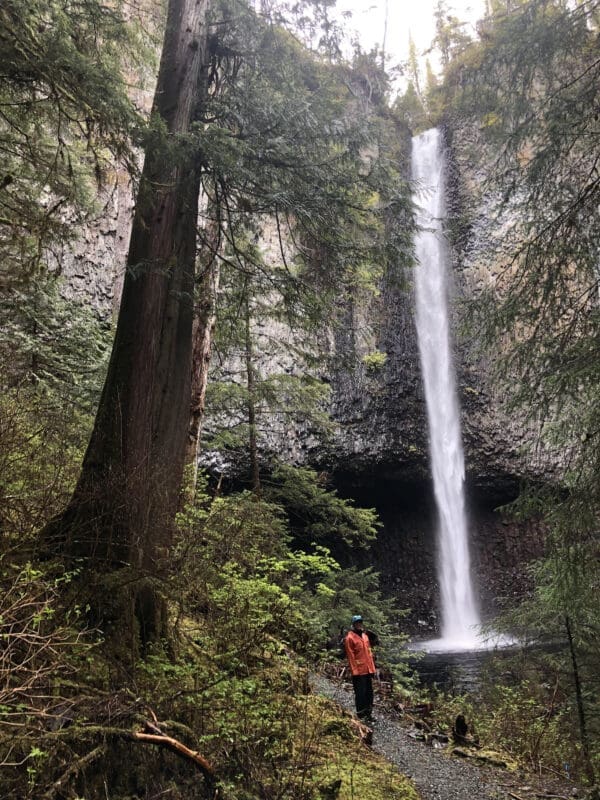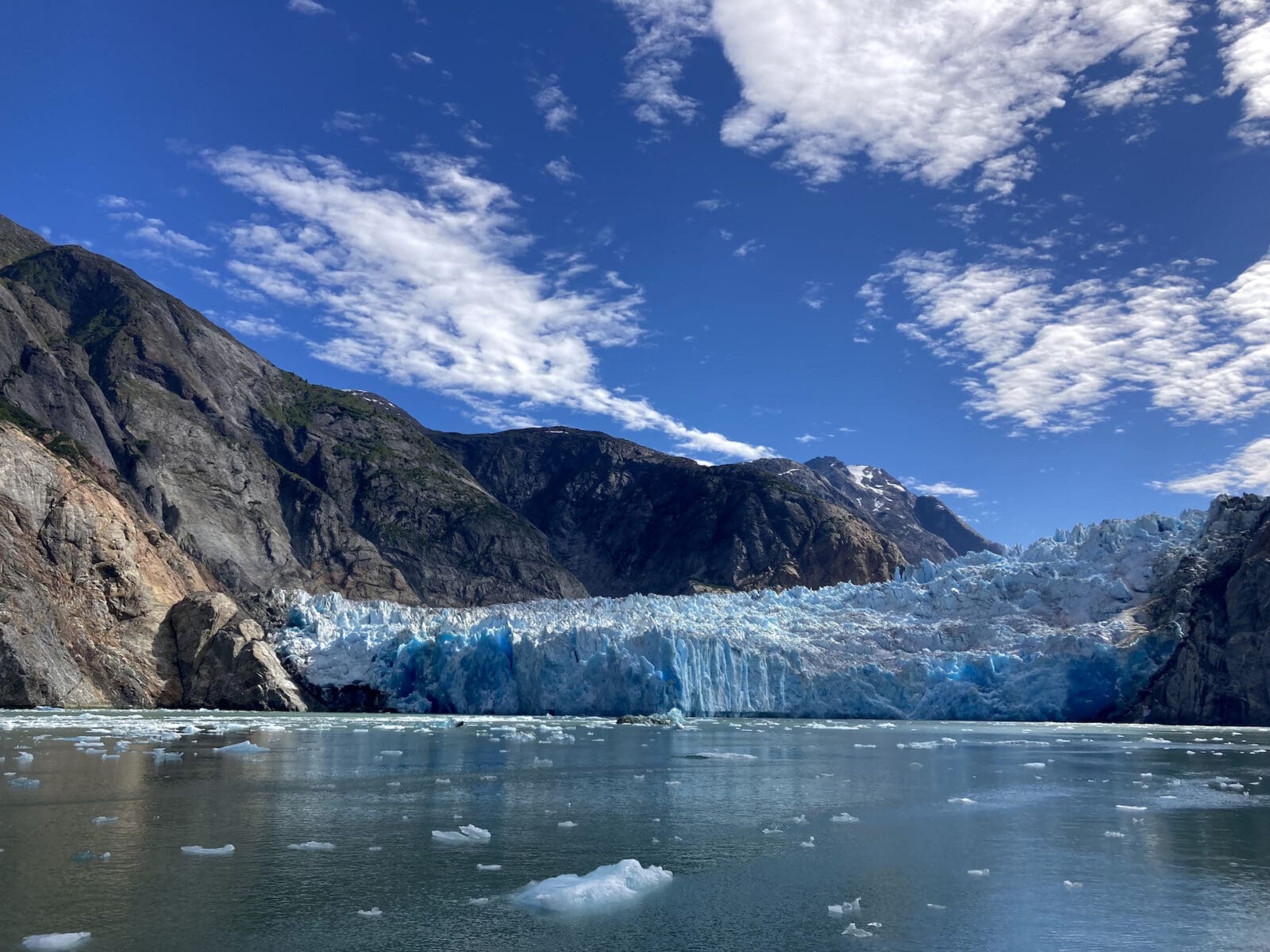Alaska abounds with natural solutions to climate change. These solutions are the forests, wetlands, tundra, and alpine landscapes throughout the state. They are the estuarine fringes of Bristol Bay, the coastal plain of the Arctic Refuge, and the abundance of living, dying, and decaying trees throughout the Tongass National Forest.
These landscapes respond every day to the climate crisis with elegant simplicity: store carbon – keep it in the ground, capture it in plants, and reduce its presence in the atmosphere.
 In Alaska, many of our most important landscapes for natural climate solutions are public lands. Collectively, Alaska’s public lands and waters account for more than 35% of the nation’s total public lands – and store over 50% of the total carbon for the United States.
In Alaska, many of our most important landscapes for natural climate solutions are public lands. Collectively, Alaska’s public lands and waters account for more than 35% of the nation’s total public lands – and store over 50% of the total carbon for the United States.
We steward these shared lands through federal legislation, executive orders and rules, and comprehensive planning that shapes management decisions – from how many trees to cut or oil rigs to place to how best to support the migration of caribou across broad mountain ranges.
While many public lands help store carbon, some activities on public lands also emit carbon. Nationally, public lands account for more than 25% of total annual U.S. carbon emissions, largely from oil, gas, and coal related activities permitted on federal lands. Alaska’s federal lands contain many sources of potential carbon emissions. For example, an estimated 40-50 billion barrels of oil is still available for extraction across Alaska lands (for context, this would total emissions from 3.8 billion gasoline-powered cars in one year). A shift in management focus from carbon-emitting resource extraction to carbon sequestration and climate mitigation in Alaska means net gains in climate stabilization across the globe.
As is often the case in addressing climate change, our greatest challenges can facilitate our greatest opportunities. On federal public lands in Alaska, we have a once-in-a-generation opportunity to establish a new era of public lands management that promotes carbon management through nature-based solutions.
In December 2023, the Biden administration announced a new directive to protect old growth forests through national planning. The USDA Forest Service will be required to revise all national forest plans with a focus on conserving old growth forests and tracking how old growth forests are changing due to climate change – disease, infestations, wildfire. The Tongass National Forest – the largest national forest in the U.S. – is in the pre-planning phase for a forest plan revision that will begin in 2024. This marks the first time in 30 years the Tongass, distributed across 500 miles of islands in Southeast Alaska, will undergo a full plan revision.
 Also in December 2023, the Bureau of Land Management (BLM) announced a public comment period for a programmatic Environmental Impact Statement (EIS) to address management on 28 million acres of lands across Alaska. These lands are called “D-1 withdrawals” in reference to their initial formation under Section 17(d)(1) of the Alaska Native Claims Settlement Act. D-1 withdrawal lands include diverse landscapes on the North Slope, wetlands in Bristol Bay, estuaries along the proposed Ambler road corridor, and the glaciated mountains of the Chilkat range in Southeast Alaska, among others.
Also in December 2023, the Bureau of Land Management (BLM) announced a public comment period for a programmatic Environmental Impact Statement (EIS) to address management on 28 million acres of lands across Alaska. These lands are called “D-1 withdrawals” in reference to their initial formation under Section 17(d)(1) of the Alaska Native Claims Settlement Act. D-1 withdrawal lands include diverse landscapes on the North Slope, wetlands in Bristol Bay, estuaries along the proposed Ambler road corridor, and the glaciated mountains of the Chilkat range in Southeast Alaska, among others.
Many of these lands are critical to Indigenous communities who hunt, fish, harvest plants and berries, and subsist year-round on wild foods. The BLM’s draft EIS offers several alternative approaches. Revoking the withdrawals would open these lands to resource extraction, while maintaining withdrawals keeps these lands in a “de facto” conservation status. The EIS could also create opportunities such as establishing areas for climate mitigation through an “area of critical environmental concern” designation.
Separately, BLM is proposing a new Public Lands Conservation Rule that elevates “conservation” to the same status as all other multiple-use designations on BLM lands (remarkably, conservation is not currently recognized as a valid and valuable use). The proposed rule would center the impact of climate change, and necessary conservation, across all activities on BLM lands across the country. This change will open the door for climate solution activities like climate mitigation banks, wildland restoration, and climate data driven decision making. The proposed rule provides opportunities to protect places for their importance in climate stabilization.
These efforts to include climate mitigation, resilience, and stabilization as priority uses of public lands management are the result of significant public engagement led by organizations and individuals who see the importance of public lands in our fight against the worst impacts of climate change.
The decisions we make now about our public lands will set the course for the future. If we work together, it is possible to imagine an Alaska where old growth temperate rainforests, eelgrass estuaries, boreal forest muskegs, and Arctic slope wetlands are valued for their ability to store and sequester carbon. In this future, Alaska is one of our most important global solutions to climate change.
Words and photos by AVF Director of Strategic Partnerships Dr. Natalie Dawson.
Published January 31, 2024

 In Alaska, many of our most important landscapes for natural climate solutions are public lands. Collectively, Alaska’s public lands and waters account for more than 35% of the nation’s total public lands – and store
In Alaska, many of our most important landscapes for natural climate solutions are public lands. Collectively, Alaska’s public lands and waters account for more than 35% of the nation’s total public lands – and store 

 Also in December 2023, the Bureau of Land Management (BLM)
Also in December 2023, the Bureau of Land Management (BLM) 


